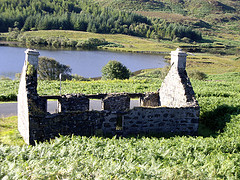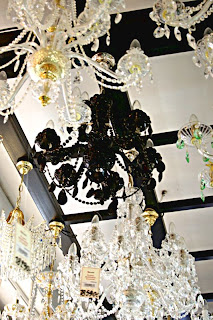I've lived in the south east of England for less than a year (and chose the worst winter in living memory to arrive) so I'm still in a learning phase. From a point of view of history, it's a fascinating area because so many invasions of the island came through here or someone had hoped that they would. Everywhere you turn you can see signs of the efforts to fight off these invasions.
I thought I'd take you on a brief and rapid tour of the coastline I've so far explored, starting at Hythe, just to the west of Folkestone. Hythe is one of the places, there are several around here, which used to be on the sea but the centre is now well inland. The name Hythe means haven or landing place so the sea must have been there once. It was one of the Cinque Ports set up in 1155, coastal towns that maintained ships ready for use by the Crown. Walking through the town, one of the first things you notice is the Military Canal. Now it's a pleasant and attractive area for relaxing, but it was built 1804-1809 to defend against possible invasion during the Napoleonic Wars. It's 28 miles long and had a Royal Military Road built alongside it now giving people the opportunity to walk or ride its length.
Moving along the coast to Folkestone now. Although it suffered invasions in its time, it's witness to the opposite too, an exodus of holiday makers from the UK to France - first from being a ferry port, then a hovercraft port, and now it hosts one end of the channel tunnel.
 |
| Folkestone beach and remains of hoverport |
 |
| Cars loading on to Channel Tunnel train |
Folkestone has cliffs but nothing like the white cliffs of Dover, our next stop along the way. Once my parents lived on top of those cliffs so I know the fantastic views from walks along the cliff tops. The cliffs are about to undergo "refurbishment" by which they mean the removal of some of the scrub that's grown on the cliff face and spoils the "whiteness".
 |
| Dover Castle above the white cliffs |
Dover is so much more than white cliffs though, with its castle high up on the cliff guarding the area from invasion ever since the 12th century right up until World War II.
 |
| Dover Castle seen from the land side |
Now it's one of the main crossing points to Europe.
 |
| The Port of Dover from the castle |
 |
| Cross Channel ferries continually going to and fro |
You'll notice the beach at Dover - shingle, or pebbled, like so many others in this part of the world. Shingle beaches are fairly unusual elsewhere and provide a particular habitat for wildlife, protected in some places.
Further along, and passing the place where the Romans first set foot in Britain, the small town of Deal used to be the busiest port in England, though now it's hard to imagine. The Goodwin Sands sheltered (still do) ships' moorings and until steam powered ships were commonplace the town (and smuggling) flourished.
 |
| Deal sea front |
 |
| Middle Street, a hotbed of smuggling |
Deal Castle, built by Henry VIII, is the most obvious reminder of days gone by.
The next place I'd like to show you is Sandwich, another town that was once a port and is now quite a distance from the sea.
 |
| Sandwich quay |
In 1023 King Canute granted a charter to the monks of Christchurch Canterbury to operate a ferry across the river and collect fares. The Barbican was built in 1740 and beneath it is a list of the old tolls due.
 |
| The Barbican, Sandwich, with The Crispin inn next door |
There are various ancient inns nearby. The one next to the Barbican, the Crispin, dates from 1491 but as an inn only since 1769. Before that it was the home of the ferryman. It was named after the patron saint of shoemakers, said to have been shipwrecked nearby.
For those interested in golf, the Royal St George's golf course is in Sandwich and will host the 2011 Open Championship.
Ramsgate next, and here we have the only Harbour allowed call itself "Royal" in the country.
Until 1723 Ramsgate was just a fishing village but it became another of the Cinque Ports and during the Napoleonic Wars it was almost a garrison town. It played a large part in the evacuation of Dunkirk 70 years ago, by the fleet of Little Ships. Next week as many of the Little Ships that are able will mark the anniversary with a flotilla going across the Channel to Dunkirk once again.
Finally, breathe a sigh of relief, Whitstable, famous for its oysters since Roman times. A lovely little seaside town with fish, shellfish and seafood available at every turn.
 |
| A well known and popular fish restaurant, with prices to match |
 |
| Part of the fish market |
It's so well known as a seafood town that the old railway (the Canterbury and Whitstable Line) used to be nicknamed the Crab and Winkle Line.
Of course the best known place in this part of Kent is Canterbury but anyone making a pilgrimage there for the Cathedral and old city could do far worse than to extend the journey for a quick look around the coastline, to the many other places of interest.





![Reblog this post [with Zemanta]](http://img.zemanta.com/reblog_e.png?x-id=d0017907-48a2-4bba-b134-f3a75939f0aa)







![Reblog this post [with Zemanta]](http://img.zemanta.com/reblog_e.png?x-id=d3aeff9d-46bf-491c-a5a4-63020a1c0046)





